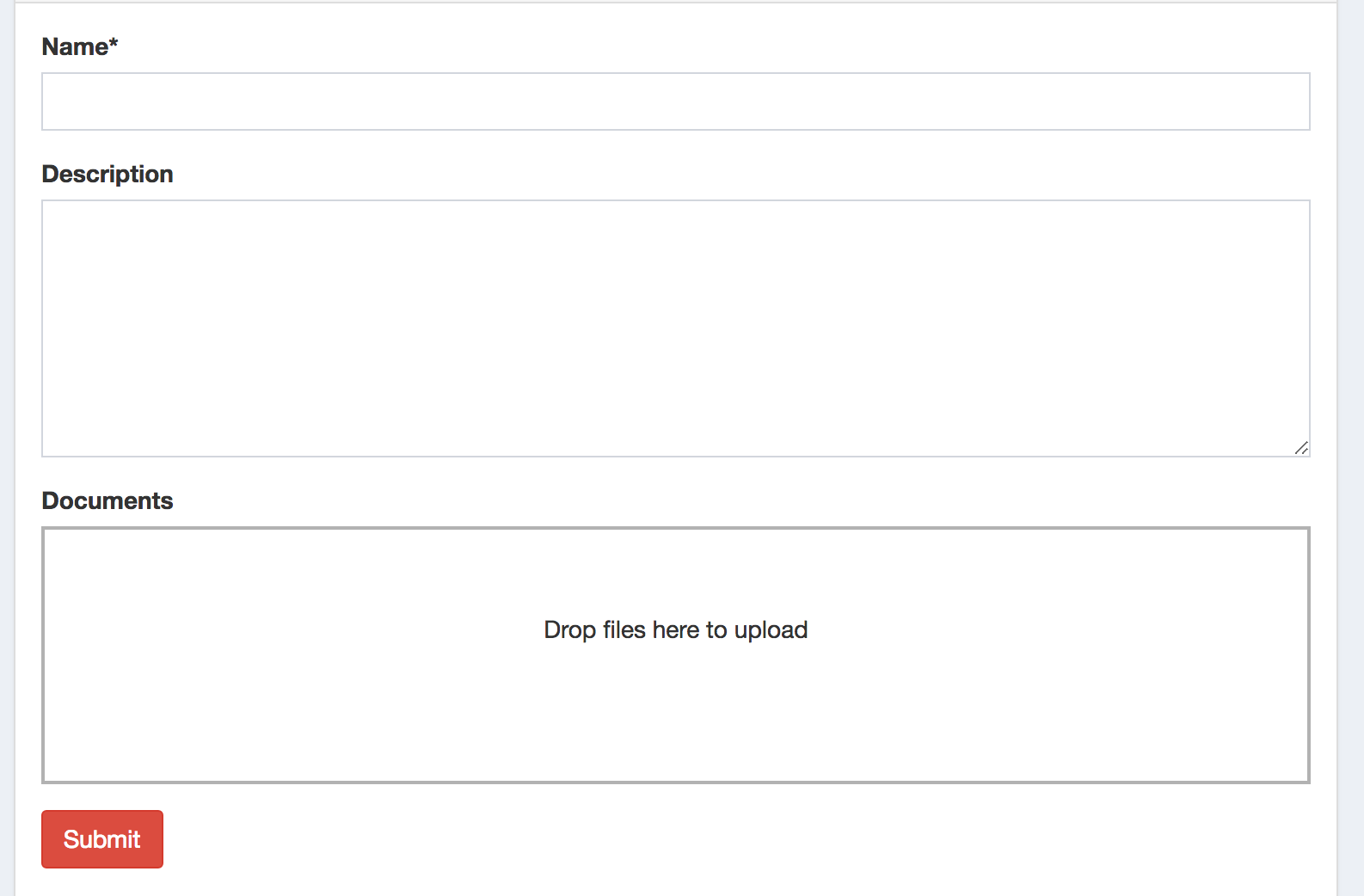
And so, in our edit template, we're including a normal JavaScript file that lives in the public/js/ directory: admin_article_form.js, which holds some pretty traditional JavaScript. But in this tutorial, to keep things simple, we're not using Encore. If you're using Encore, you can do this - and I recommend it.
DROPZONE INPUT FILE INSTALL
I normally use Webpack Encore, and so, whenever I need a third-party library, I install it via yarn and import it when I need to use it. and when you drop a file here or select a file, it starts uploading.

Google for a library called Dropzone: it's probably the most popular JavaScript library for handling file uploads. Installing Dropzoneįirst: the upload part. In fact, over the next few videos, we're going to create a pretty awesome little widget for uploading multiple files, deleting them, editing their filenames and even re-ordering them. I also want my files to start uploading as soon as I select them and I want a progress bar. But if you're inside a form, good luck: unless you do some serious work, none of them will be saved because the entire form was invalid! because I don't like the user experience! What if I select 10 files, wait for all of them to upload, then one is too big and fails validation? If you're not inside a form, you could probably save 9 of them and send back an error.
DROPZONE INPUT FILE HOW TO
In Symfony, we would then be handling an array of UploadedFile objects, instead of one.īut, I'm not going to show how to do that. It makes sense: instead of uploading files one-by-one, an author should be able to select a bunch at a time! This is something that's totally supported by the web: if you add a multiple attribute to a file input, boom! Your browser will allow you to select multiple files. One request that I heard over and over again was: handling multiple file uploads at a time. which, by the way - thank you! That was awesome! Your requests absolutely helped drive this tutorial. That's all there is to it.When I started creating this tutorial, I got a lot of requests for things to talk about. So when we go to the actual view we get something like this: (Html.BeginForm("Upload", "FrameUpload", FormMethod.Post, new and stored all the user's files there. Now let's build a view model for our view: public class UploadViewModel Let's say we've already fetched the user from our data store of choice. So how do we impose these restrictions dynamically for each user?

It might be a requirement that getting to the view in the first place means the user might only be allowed a maximum of 1 file upload and their acccount only allows them a 2MB limit, and they can only upload images. In our mvc view, we don't want to be able to just let the user upload anything. A Little Business Requirement#īefore we move onto the next part, I'd like to take a step back and consider a business requirement for the upload that you may have in the real world. Then add that to your _Layout.cshtml if you're using the default shared layout.

In the BundleConfig.cs add the dropzone bundle: bundles.Add(new ScriptBundle("~/bundles/dropzone").Include( SirKirby was already nice enough to create a nuget package for us so let's install that in a new MVC application project. So let's get something up to see what we can do. Some key features I like about dropzone are: So that part you would have to implement yourself. It does check mime-type and extensions though which is a plus. Just to note though, the only thing it doesn't do so far is read the first few bytes of a file to double check its contents. Especially if the business requirement is restricting file types or wants some custom events to happen based on event x, and having backward compatibility or a fancy drag and drop area.ĭropzoneJs does a lot of the plumbing and has all the above features mentioned and it's open source! Getting it right and customizable to your needs usually requires a little more work though. File uploading is one of those things that's pretty standard for websites.


 0 kommentar(er)
0 kommentar(er)
